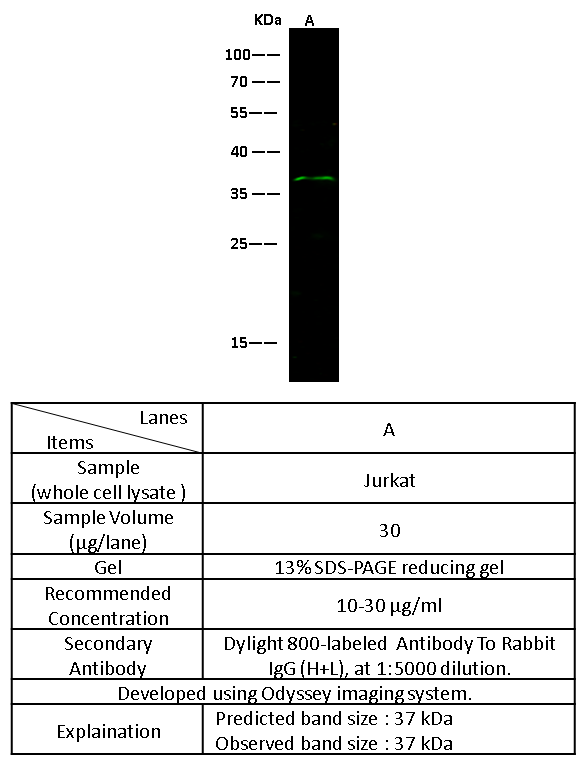-
Product Name
Anti-TRACP/ACP5 antibody
- Documents
-
Description
Rabbit polyclonal to TRACP/ACP5
-
Tested applications
WB
-
Species reactivity
Human ACP5
-
Alternative names
SPENCDI antibody; TRACP antibody; TRAP antibody; TRAP antibody; Acp5 antibody; ACP5 antibody; MGC117378 antibody; TRACP antibody; TRACP antibody; TRAP antibody; TRAP antibody
-
Isotype
Rabbit IgG
-
Preparation
Produced in rabbits immunized with a synthetic peptide corresponding to the N-terminus of the human ACP5, and purified by antigen affinity chromatography.
-
Clonality
Polyclonal
-
Formulation
0.2 μm filtered solution in PBS
-
Storage instructions
This antibody can be stored at 2℃-8℃ for one month without detectable loss of activity. Antibody products are stable for twelve months from date of receipt when stored at -20℃ to -80℃. Preservative-Free.
Sodium azide is recommended to avoid contamination (final concentration 0.05%-0.1%). It is toxic to cells and should be disposed of properly. Avoid repeated freeze-thaw cycles. -
Applications
WB: 10-30 μg/ml
-
Validations

TRACP / ACP5 Antibody, Rabbit PAb, Antigen Affinity Purified, Western blot
-
Background
Tartrate-resistant acid phosphatase (TRACP) or acid phosphatase 5, tartrate resistant (ACP5 or TRAP) is a glycosylated monomeric metalloenzyme expressed in mammals. TRACP is associated with osteoblast migration to bone resorption sites, and, once there, TRACP is believed to initiate osteoblast differentiation, activation, and proliferation. TRACP once considered to be just a histochemical marker of osteoclasts is now recognised to be a molecule of widespread occurrence with functions in both the skeleton and the immune system. Two forms of TRACP circulate in human blood, TRACP 5a derived from macrophages and dendritic cells, and TRACP-5b derived from osteoclasts. Recent data have demonstrated the utility of TRACP-5b as a marker of osteoclast number and bone resorption, and serum TRACP-5a as a marker of inflammatory conditions. TRACP is expressed by osteoclasts, macrophages, dendritic cells and a number of other cell types. It has a critical role in many biological processes including skeletal development, collagen synthesis and degradation, the mineralisation of bone, cytokine production by macrophages and dendritic cells, macrophage recruitment, dendritic cell maturation and a role in the development of Th1 responses.
-
References
- Hayman AR. (2008) Tartrate-resistant acid phosphatase (TRAP) and the osteoclast/immune cell dichotomy. Autoimmunity. 41(3): 218-23.
- Halleen JM, et al. (2006) Tartrate-resistant acid phosphatase 5b (TRACP 5b) as a marker of bone resorption. Clin Lab. 52(9-10): 499-509.
- Mochizuki Y. (2006) Bone and bone related biochemical examinations. Bone and collagen related metabolites. Tartrate-resistant acid phosphatase (TRACP). Clin Calcium. 16(6): 948-55.
- Lamp EC, et al. (2000) Biology of tartrate-resistant acid phosphatase. Leuk Lymphoma. 39(5-6): 477-84.
Related Products / Services
Please note: All products are "FOR RESEARCH USE ONLY AND ARE NOT INTENDED FOR DIAGNOSTIC OR THERAPEUTIC USE"
